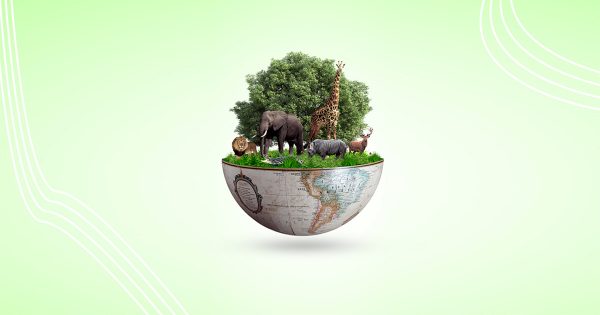Adopted by all 193 member-states of the United Nations in 2015, the Sustainable Development Goals constitute the universal call to action to end poverty, protect the planet, and improve the lives and prospects of everyone, everywhere. Defined as development that meets the needs of the present without compromising the ability of future generations to meet their own needs, sustainable development requires the harmonisation of three core elements — economic growth, social inclusion, and environmental protection. 1 If this is achieved, we can build an inclusive, sustainable, and resilient future for people and the planet. 2
Historically, pollutive mining practices of the past have contributed to many challenges that the Sustainable Development Goals are trying to address. 3 But significant strides have been made in mitigating and managing socio-environmental risks. Investments in inclusive and sustainable practices have brought about new growth prospects for mining operations. By improving the conditions faced by mining employees, achieving energy efficiencies, promoting transparent reporting on mining conditions, and using clean chemicals such as Clean Earth Technologies’ non-toxic gold recovery reagent in their mining operations, mining operators can contribute to the advancement of the Sustainable Development Goals and maximise the social and economic benefits of mining. 4
While progress is being made in many places, more needs to be done.
Mining, minerals, and metals are invaluable to the economic and social development of many countries, and a lot of mining operations are located in remote, ecological-sensitive areas. 5 Mining activities carried out without regard for socio-environmental concerns may lead to environmental degradation. 6 But if greater emphasis is placed on sustainable development, the gold mining industry can take further actions to become a leading partner in contributing to the 17 Goals. 7
Through their direct operations, mining entities generate profits, provide gainful employment, and deliver economic growth in many countries. It is widely recognised that governments can catalyse broad-based economic development when mining resources are managed effectively and properly. By partnering with governments and civil society, mining operators can extend the benefits of mining beyond the life of the mine itself. 8 Such partnerships can happen at multiple levels and further existing activities by like-minded institutions, government agencies, intergovernmental organisations, and other stakeholders to promote transparency and sustainable mining development. 9
Governments also need to develop, regulate, and provide the necessary oversight for their domestic mining industries in the interest of promoting sustainable development. Effective legal and regulatory frameworks, policies, and mechanisms must exist for mining operators to reduce their environmental impact. Partnerships between gold mining companies and governments which involve commitments to sustainable and clean practices may help mining communities and protect against environment degradation. 10
The provision of capacity-building support to emerging economies is also another avenue for governments to partner with mining operators. 11 For sustainable mining and minerals development to continue, the sharing of expertise and technical knowledge, and wherever possible, exploring value-added processing to reclaim and rehabilitate degraded sites, will allow countries to conserve fragile ecosystems within their territorial boundaries.
Mining companies have great potential to advance the Sustainable Development Goals. Positive contributions can be attained when mining operators work continuously to integrate sustainable changes to their core business, and, with the mining industry as a whole, bolster collaboration, partnership, and meaningful engagement with civil society, mining communities, and other stakeholders.
____________________________
[1] Ki-mun Pan and Jeffrey Sachs, The Age of Sustainable Development (New York, NY: Columbia University Press, 2015).
[2] A. Han Onn and A. Woodley, “A Discourse Analysis on How the Sustainability Agenda Is Defined within the Mining Industry,” Journal of Cleaner Production 84 (2014): pp. 116-127, https://doi.org/10.1016/j.jclepro.2014.03.086.
[3] The impact of gold mining on the environment in developing countries is well researched and documented. For more, see, Gavin Hilson, “Small-Scale Mining in Africa: Tackling Pressing Environmental Problems With Improved Strategy,” The Journal of Environment & Development 11, no. 2 (2002): pp. 149-174, https://doi.org/10.1177/10796502011002003.
[4] “Mining .:. Sustainable Development Knowledge Platform,” United Nations (United Nations), accessed August 3, 2020, https://sustainabledevelopment.un.org/index.php?menu=1259.
[5] Albert K. Mensah, Ishmail O. Mahiri, Obed Owusu, Okoree D. Mireku, Ishmael Wireko, and Evans A. Kissi, “Environmental Impacts of Mining: A Study of Mining Communities in Ghana.” Applied Ecology and Environmental Sciences, vol. 3, no. 3 (2015): 81-94.
[6] Amponsah-Tawiah K., Tuokuu F.X.D. (2017) Effects of Dwindling Gold Prices on Corporate Social Responsibility (CSR) Performance in Ghana’s Mining Sector. In: Idowu S., Vertigans S., Schiopoiu Burlea A. (eds) Corporate Social Responsibility in Times of Crisis. CSR, Sustainability, Ethics & Governance. Springer, Cham. https://doi.org/10.1007/978-3-319-52839-7_12
[7] Golam Rasul, “Managing the Food, Water, and Energy Nexus for Achieving the Sustainable Development Goals in South Asia,” Environmental Development 18 (2016): pp. 14-25, h ttps://doi.org/10.1016/j.envdev.2015.12.001.
[8] “How Can Mining Contribute to the Sustainable Development Goals? | Africa Renewal,” United Nations (United Nations), accessed August 3, 2020, https://www.un.org/africarenewal/news/how-can-mining-contribute-sustainable-development-goals.
[9] “UN Report of the World Summit on Sustainable Development” (Johannesburg, 2002).
[10] Gavin Hilson, “Putting Theory Into Practice: How Has The Gold Mining Industry Interpreted The Concept Of Sustainable Development?,” Mineral Resources Engineering 10, no. 04 (2001): pp. 397-413, https://doi.org/10.1142/s0950609801000725.
[11] AbrahamKumah,“Sustainability and Gold Mining in the Developing World,” Journal of Cleaner Production 14, no. 3-4 (2006): pp. 315-323, https://doi.org/10.1016/j.jclepro.2004.08.007.



